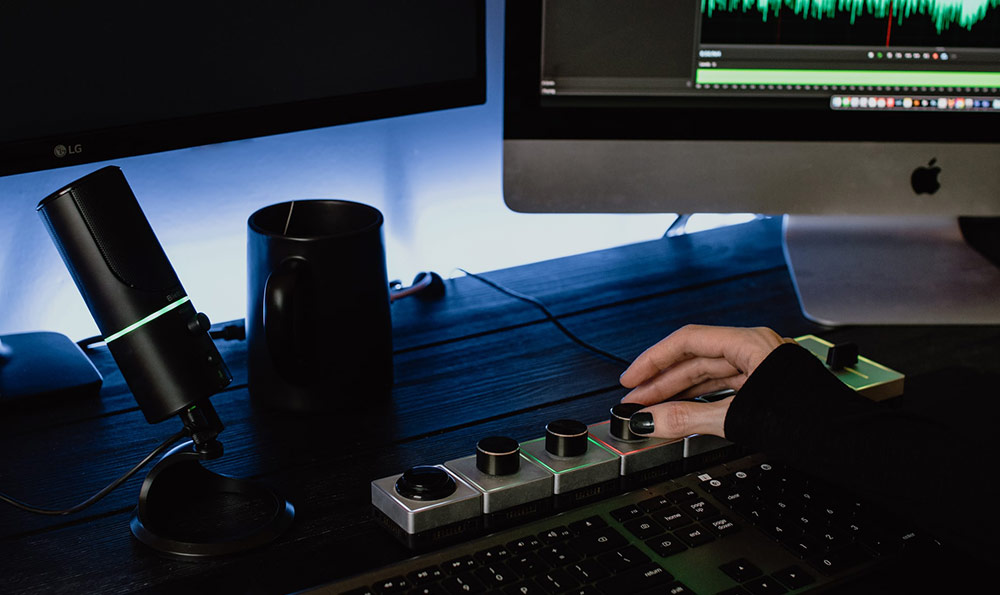吃午餐的英语怎么写,英文吃午饭配音
吃午餐的英语怎么写,英文吃午饭配音,老铁们想知道有关这个问题的分析和解答吗,相信你通过以下的文章内容就会有更深入的了解,那么接下来就跟着我们的小编一起看看吧。
The English Way to Say "Lunch" and its Vocalization

Introduction:
The purpose of this industry article is to provide an in-depth exploration of how to express the act of having lunch in English. This topic is fundamental to language learners and it plays an essential role in daily communication. By examining the various phrases and vocabulary related to this topic, we will gain a comprehensive understanding of how English speakers talk about lunchtime meals. This article will employ a formal and professional writing style, presenting the information in an informative and explanatory manner. Additionally, the use of comparative and contrasting techniques, as well as rhetorical devices and evaluative strategies, will be incorporated to engage and captivate readers.
Lunch, known as the midday repast, occupies a significant position in the daily routine of people around the world. In English, there are multiple ways to express the concept of having lunch. One of the most commonly used phrases is "have lunch." This expression is concise and straightforward in conveying the act of eating during the midday hours. Another popular phrase is "eat lunch," which carries a similar meaning as "have lunch." However, "eat lunch" tends to be more explicit in emphasizing the action of consuming food. By comparing these two phrases, we can discern subtle differences in nuance, enabling us to select the most appropriate expression according to the context.
In addition to the aforementioned phrases, English language speakers also utilize the term "lunchtime" to refer to the period specifically designated for eating lunch. "Lunchtime" is often employed in more formal settings, such as offices and schools, where individuals adhere to a fixed schedule. This term not only denotes the time but also signifies the significance attached to this mealtime. By employing "lunchtime" in conversations, one can create a sense of structure and organization, emphasizing the importance of taking a break during the middle of the day.
To add diversity and flexibility to our vocabulary, we can employ various synonyms to express the idea of having lunch. For instance, the terms "dine," "feast," "partake of lunch," and "break bread" all convey the action of having lunch, but with subtle differences in tone and formality. "Dine," for example, evokes a more sophisticated and elegant atmosphere, often associated with fine dining experiences. On the other hand, "feast" implies a more indulgent and abundant meal, while "partake of lunch" has a slightly formal connotation, suitable for professional settings. "Break bread" carries a sense of camaraderie and communal dining, highlighting the social aspect of lunchtime meals.
In conclusion, expressing the act of having lunch in English encompasses a range of phrases and vocabulary choices. By gaining knowledge of these terms, learners can effectively communicate and integrate into English-speaking environments. The phrases "have lunch" and "eat lunch" provide a foundation for expressing this concept, while "lunchtime" adds a dimension of specificity. Furthermore, incorporating synonyms such as "dine," "feast," "partake of lunch," and "break bread" demonstrates a deeper understanding of the English language and its nuances. As language learners, we must strive to master such expressions to enhance our fluency and proficiency in English communication.
吃午餐的英语怎么写

How to Write "Lunch" in English - A Guide to the Lunch Industry
Introduction:
Have you ever wondered how to express the concept of "lunch" in English? In this article, we will explore the various ways to describe eating lunch in English, considering its cultural and linguistic aspects. Through comparing and contrasting different terminologies and expressions related to lunch, this article aims to provide readers with a comprehensive understanding of the topic.
Types of Lunch:
When it comes to categorizing lunch, we can broadly divide it into three main types: packed lunch, takeout lunch, and dine-in lunch.
Packed Lunch:
Packed lunch, also known as a "brown bag lunch" or "lunchbox meal," refers to a meal prepared at home and brought to work or school. This type of lunch allows individuals to have control over their food choices and portion sizes. It is convenient, cost-effective, and often allows for healthier eating habits than other lunch options.
Takeout Lunch:
Takeout lunch, also called "grab-and-go" or "to-go lunch," is a popular choice for those who prefer convenience and speed. It refers to meals purchased from restaurants, cafes, or food stalls to be consumed outside their premises. Takeout lunch offers a wide range of culinary options, including sandwiches, salads, and hot meals, catering to different tastes and dietary preferences.
Dine-in Lunch:
Dine-in lunch is typically enjoyed at restaurants, cafes, or canteens, where individuals can sit down and savor their meals in a relaxed environment. Known for their diverse menus and ambiance, dine-in establishments provide a social experience and a break from the daily routine. This type of lunch can be a quick affair or a more leisurely event, depending on personal preferences and time constraints.
Cultural Aspects:
In addition to the types of lunch, it is worth examining the cultural aspects associated with eating this midday meal. Different cultures around the world have their unique customs and traditions when it comes to lunchtime. For example, in many Western countries, lunch is typically consumed between 12:00 pm and 1:00 pm and is often seen as a brief break from work or school. On the other hand, in countries like Spain and Italy, lunchtime is considered an extended affair, with a generous break often lasting up to two hours.
Conclusion:
In conclusion, the English language offers various ways to express the concept of lunch, taking into account different types and cultural aspects associated with this midday meal. By using appropriate terminology and expressions related to packed lunch, takeout lunch, and dine-in lunch, individuals can effectively communicate their lunch preferences and experiences. Understanding the cultural nuances and variations of lunchtime practices across different regions can further enrich one's knowledge of this universal daily ritual. So next time you find yourself discussing lunch in English, remember the different options available and the cultural influences that shape this seemingly simple concept. Enjoy your meal and bon appétit!
你们午饭吃什么用英语怎么说

What Do You Have for Lunch? A Glimpse into the World of Culinary Choices
Introduction:
In our fast-paced world, where time is a luxury, decisions regarding our midday meal often become overwhelming. What should we eat for lunch? This article aims to shed light on the vast array of options available, providing an overview of popular choices and the reasons behind them. From traditional cuisines to modern trends, let's embark on a culinary journey and explore the diverse and intriguing world of lunchtime choices.
Exquisite Delicacies from Around the Globe:
When it comes to lunch, the possibilities are endless. One may opt for a Western-style meal, such as a refreshing salad bursting with vibrant colors and flavors. Alternatively, an Asian-inspired dish like sushi can satisfy both the palate and the eye. The contrasting textures and subtle balance of ingredients make these dishes an appealing choice for many. Furthermore, Middle Eastern delicacies, with their aromatic spices and hearty flavors, provide a unique and satisfying lunchtime experience.
The Convenience of Fast Food:
In today's fast-paced society, convenience often takes precedence over elaborate meals. Fast food, with its quick service and familiar taste, has gained popularity worldwide. Burgers, fries, and other fast food staples offer a convenient and affordable option for those on the go. While nutritional concerns persist, the fast food industry has made efforts to introduce healthier alternatives, such as salads and grilled options. It is essential to strike a balance between convenience and nutritional value when choosing our lunch.
Health Conscious Choices:
With growing awareness about the impact of our diet on our overall well-being, many individuals are opting for healthier lunch choices. Freshly made sandwiches, packed with nutritious ingredients, have become a popular choice among health-conscious individuals. Embracing the concept of "clean eating," people are increasingly opting for whole grain bread, lean proteins, and an assortment of vegetables. This trend emphasizes the importance of a balanced and wholesome lunch for optimal health and productivity.
Plant-Based Alternatives:
In recent years, the popularity of plant-based diets has surged, and this choice has extended to lunchtime as well. Vegan and vegetarian options are now widely available, providing individuals with a range of exciting and flavorful alternatives. From plant-based burgers to protein-packed salads, these options have garnered attention for their positive impact on the environment and personal well-being. As more people embrace a plant-based lifestyle, the demand for innovative and appetizing lunch choices continues to grow.
The Art of Meal Prepping:
Meal prepping has revolutionized the way people approach lunchtime. By dedicating a specific time to plan and prepare meals in advance, individuals can save time and ensure a balanced diet. This method allows for greater control over ingredients, portion sizes, and overall nutrition. Additionally, meal prepping provides a cost-effective solution for those on a budget. With a little planning and creativity, anyone can enjoy a delicious and tailored lunch without compromising on quality or convenience.
Conclusion:
Whether you are a fan of global cuisines, a health-conscious individual, or simply seeking a quick and convenient option, the choices available for lunch are endless. From traditional dishes to modern trends, our lunchtime decisions reflect our preferences, values, and lifestyle. By exploring and embracing the diverse culinary world, we can elevate our lunchtime experience and nourish both our bodies and minds. So, the next time you find yourself pondering over the question, "What do you have for lunch?" remember that the possibilities are vast and exciting.
吃午餐的英语怎么写,英文吃午饭配音的问题分享结束啦,以上的文章解决了您的问题吗?欢迎您下次再来哦!
免责声明:以上整理自互联网,与本站无关。其原创性以及文中陈述文字和内容未经本站证实,对本文以及其中全部或者部分内容、文字的真实性、完整性、及时性本站不作任何保证或承诺,请读者仅作参考,并请自行核实相关内容。(我们重在分享,尊重原创,如有侵权请联系在线客服在24小时内删除)
为您的创意找到最好的声音
平台累计配音,超40,050,000 分钟
-
品质保证15年专注网络配音行业 500+国内外专业配音员
-
多种配音中文多场景配音 提供小语种配音
-
公司化运作提供正规发票 签订服务合同
-
双重备案工信部公安双重备案 取得文化经营许可证
-
7*14全天候服务公司实现轮流值班 9:00-21:00都有客服
推荐样音
更多收到您的极速试音需求
关注【客服微信】
听最新案例,新客礼包等你拿!
提交成功
试音顾问将在工作日半小时内联系您,请准备试音文稿或参考音频加速匹配
你也可以注册,可自助下单挑选主播,在线接单配音。(7 X 24小时主播接单)











